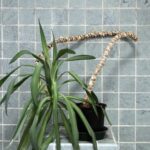Are you tired of traditional landscaping with plants and flowers? Looking for a more modern and low-maintenance approach to beautifying your outdoor space? If so, then no plant landscaping ideas might be just what you need.
This innovative concept focuses on creating visually appealing landscapes without the use of traditional plants, flowers, or grass. Not only does this approach offer a unique and contemporary aesthetic, but it also comes with several benefits such as reduced water usage, minimal upkeep, and the ability to withstand various weather conditions.
No plant landscaping is not about leaving your outdoor space bare or lifeless. Instead, it involves embracing alternative elements such as hardscaping materials like stone, gravel, and wood, minimalist design principles that focus on open space and simplicity, rock gardens with rocks, pebbles, and boulders, water features like ponds and fountains as focal points in the landscape, sustainable options like artificial turf and xeriscaping techniques, outdoor lighting to enhance the beauty of a plant-free landscape during nighttime.
By exploring these no plant landscaping ideas, you can transform your outdoor space into a stunning and low-maintenance sanctuary.
In this article, we will delve into various no plant landscaping ideas that can help you create a beautiful and modern outdoor environment without the need for traditional plants. From hardscaping to sustainable options to maintenance tips, we will cover everything you need to know about designing and caring for a no-plant landscape that is both visually striking and environmentally friendly.
Whether you are looking to revamp your existing garden or starting from scratch with a new outdoor space, these no plant landscaping ideas will inspire you to think outside the box and create a unique oasis right in your own backyard.
Hardscaping
Stone pathways, retaining walls, and rock gardens are just a few examples of hardscaping elements that can be used to transform a garden or outdoor area. These features not only add visual interest but also serve practical purposes such as erosion control and defining separate areas within the landscape. Gravel is another versatile material commonly used in hardscaping, offering texture and natural beauty while being relatively easy to maintain.
Additionally, incorporating wood elements like decks, pergolas, or fences can add warmth and organic charm to a plant-free landscape. Wood also ages beautifully and can be treated to withstand the elements, making it a durable choice for outdoor structures. When combined with stone and gravel, these materials come together to create cohesive and aesthetically pleasing outdoor environments that are sure to impress guests and homeowners alike.
Overall, hardscaping provides numerous opportunities for creativity and expression in landscaping design without relying on traditional plants. By utilizing stone, gravel, wood, and other non-plant elements, individuals can achieve stunning outdoor spaces that are not only visually striking but also sustainable and low-maintenance in the long run.
Minimalist Design
One of the key components of minimalist design is the use of open space. This approach involves creating large areas of uncluttered space, often with simple lawn or gravel surfaces that require minimal upkeep. Geometric shapes and lines are also essential to minimalist landscaping, as they add structure and visual interest to the outdoor space. Incorporating elements such as rectangular or circular patios, pathways, and decking can help define the overall design and create a sense of order and balance.
In addition to embracing open space and geometric lines, simplicity is another fundamental aspect of minimalist design. This means focusing on a select few materials, colors, and textures to create a cohesive and harmonious landscape. For example, using neutral tones such as white, gray, or black for hardscaping elements like paving stones or gravel can contribute to the clean and modern look of a no-plant landscape.
| Key Component | Description |
|---|---|
| Open Space | Creative large areas of uncluttered space with simple lawn or gravel surfaces |
| Geometric Shapes | Incorporating rectangular or circular patios, pathways, and decking for structure |
| Simplicity | Focusing on select few materials, colors, and textures for a cohesive look |
Rock Gardens
When designing a rock garden, it’s essential to carefully select a variety of rocks and boulders in different shapes, sizes, and colors to add depth and interest to the landscape. Additionally, incorporating strategic placement of these elements can create natural-looking formations that mimic the beauty of a mountainous terrain.
By layering rocks with varying textures and arranging them in an artful manner, homeowners can achieve a visually appealing and dynamic rock garden that serves as an eye-catching focal point in their outdoor space.
In addition to their aesthetic appeal, rock gardens also offer environmental benefits such as improved water drainage and erosion control. With proper planning and design, these landscapes can support a diverse range of wildlife and provide habitats for insects and small animals. For homeowners seeking no plant landscaping ideas that prioritize sustainability and conservation efforts, rock gardens are an excellent choice that seamlessly blends with the natural surroundings while requiring minimal resources for maintenance.
Water Features
Fountains
Fountains are one of the most popular water features in no plant landscaping ideas. They come in various styles and sizes, ranging from small tabletop designs to large, intricate installations. The sound of running water adds a serene ambiance to the surroundings, making fountains an excellent choice for creating a relaxing environment in a plant-free landscape.
Ponds
Ponds can be the centerpiece of a no-plant landscape, providing a habitat for fish and other small aquatic creatures. They offer the opportunity to incorporate water plants such as lilies or lotus if desired but can also be maintained as plant-free by using natural rocks and pebbles around the edges for added visual interest.
Waterfalls
Waterfalls bring movement and sound to a plant-free landscape, creating an inviting focal point. With options ranging from cascading rock formations to modern wall-mounted designs, waterfalls can enhance the overall aesthetic while contributing to the calming ambiance of the space.
Incorporating these water features into a no-plant landscape provides numerous design possibilities and allows for personalization based on individual preferences and aesthetics. Whether it’s integrating a tranquil fountain or constructing an elaborate pond or waterfall, these features can transform any outdoor area into a visually stunning and serene oasis.
Sustainable Options
The concept of no plant landscaping has gained popularity in recent years as people seek low-maintenance and modern alternatives to traditional gardens. In this section, we will explore sustainable options for creating eco-friendly plant-free landscapes, including artificial turf, recycled materials, and xeriscaping. These alternatives not only reduce the need for watering and maintenance but also contribute to environmentally conscious design practices.
Artificial turf has become a popular choice for those looking to maintain a green and lush appearance in their outdoor spaces without the hassle of mowing, watering, or fertilizing. Made from synthetic fibers that mimic the look and feel of real grass, artificial turf is both durable and versatile.
It can withstand heavy foot traffic, making it ideal for use in residential lawns, playgrounds, and sports fields. Additionally, artificial turf eliminates the need for harmful pesticides and fertilizers, reducing overall environmental impact.
Another sustainable option for no plant landscaping is using recycled materials such as reclaimed wood, composite decking, or recycled glass. Not only does this reduce waste by repurposing existing materials, but it also adds an eclectic and unique touch to the landscape design. Recycled materials can be used to create patios, walkways, seating areas, and borders within a plant-free garden, providing both aesthetic appeal and environmental benefits.
Xeriscaping is a water-efficient landscaping method that focuses on using drought-tolerant plants and hardscaping elements to create visually stunning yet eco-friendly outdoor spaces. By incorporating gravel paths, stone features, and native plants that require minimal irrigation into the design, xeriscaping reduces water consumption while maintaining an attractive landscape. Implementing xeriscaping techniques in a no-plant landscape not only conserves water but also promotes biodiversity by supporting local flora and fauna.
| Eco-Friendly Option | Benefits |
|---|---|
| Artificial Turf | Low maintenance; reduces environmental impact from pesticides |
| Recycled Materials | Repurposes existing materials; adds unique touch to design |
| Xeriscaping | Water-efficient; supports local flora and fauna |
Lighting
When creating a plant-free landscape, it’s essential to consider the impact of outdoor lighting. Not only does proper lighting enhance the beauty of your landscape during nighttime, but it also serves practical purposes such as safety and security. Here are some important considerations for incorporating outdoor lighting into a no-plant landscape:
Types of Lighting
There are various types of lighting that can be used to illuminate a plant-free landscape. Consider options such as pathway lights to guide visitors along walkways, uplights to highlight architectural features or focal points, and string lights to create ambient lighting in outdoor living spaces.
Placement
Strategically placing lights throughout your landscape is crucial for achieving the desired aesthetic and functionality. Experiment with different placements to determine the most effective way to showcase the hardscaping elements, water features, and other focal points in your plant-free design.
Energy Efficiency
Opt for energy-efficient LED lighting to minimize electricity consumption and reduce environmental impact. Solar-powered lights are also great options for illuminating a no-plant landscape while harnessing renewable energy sources.
Maintenance Tips
In conclusion, no plant landscaping ideas offer a unique and modern approach to outdoor design, providing a range of benefits such as low maintenance, water conservation, and an eco-friendly aesthetic. By embracing hardscaping, minimalist design, rock gardens, water features, sustainable options, and outdoor lighting, homeowners can create visually appealing landscapes without the need for traditional plants or grass.
One of the key advantages of no plant landscaping is the minimal maintenance required to keep the landscape looking pristine throughout the year. With proper care and attention to detail, a plant-free landscape can remain visually stunning and functional without the need for regular watering, pruning, or fertilizing. Additionally, by incorporating sustainable options such as artificial turf or recycled materials, homeowners can further minimize their environmental impact while enjoying a beautiful outdoor space.
As more homeowners seek alternatives to traditional gardening and landscaping practices, the concept of no plant landscaping continues to gain popularity. By exploring innovative design elements and embracing sustainable options, it is possible to create striking outdoor spaces that are both visually impressive and environmentally conscious. Whether through the use of hardscaping materials or creative water features, there are countless opportunities to transform any property into an attractive and low-maintenance oasis without traditional plants.
Frequently Asked Questions
What Is the Easiest Landscaping to Maintain?
The easiest landscaping to maintain typically consists of low-maintenance plants such as succulents, ornamental grasses, and perennial flowers. These types of plants require minimal watering and pruning, making them ideal for busy homeowners or those with limited gardening experience.
What Can I Put in My Front Yard Instead of a Tree?
Instead of a tree in your front yard, consider planting a variety of shrubs, flowering bushes, or small ornamental trees. These options can add visual interest, color, and texture to your front yard while requiring less maintenance than a large tree. Additionally, you could also consider installing decorative rocks or mulch areas to add diversity to your landscaping.
How Can I Landscape My Yard Without Grass?
To landscape your yard without grass, you can opt for alternative ground coverings such as gravel, mulch, or ground-covering plants like creeping thyme or clover. Incorporating hardscaping elements like pavers, pathways, and decorative stone features can also help reduce the need for grass while adding visual appeal to your yard.
Additionally, creating themed garden areas or installing raised beds for flowers and vegetables can further enhance the look of your yard without the use of traditional grass.

Welcome to my gardening blog! I am passionate about plants and enjoy sharing my knowledge and experiences with others. In this blog, I will write about everything related to gardening, from tips on how to get started to updates on my own garden projects.





